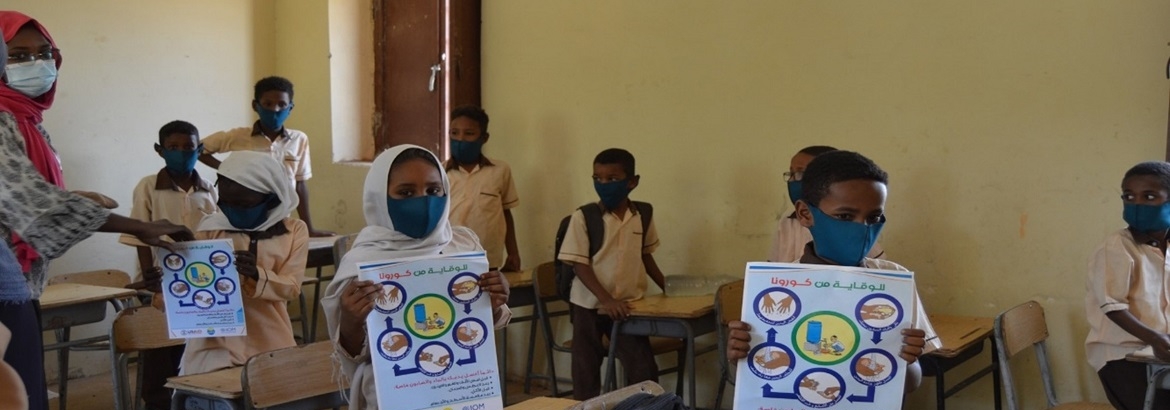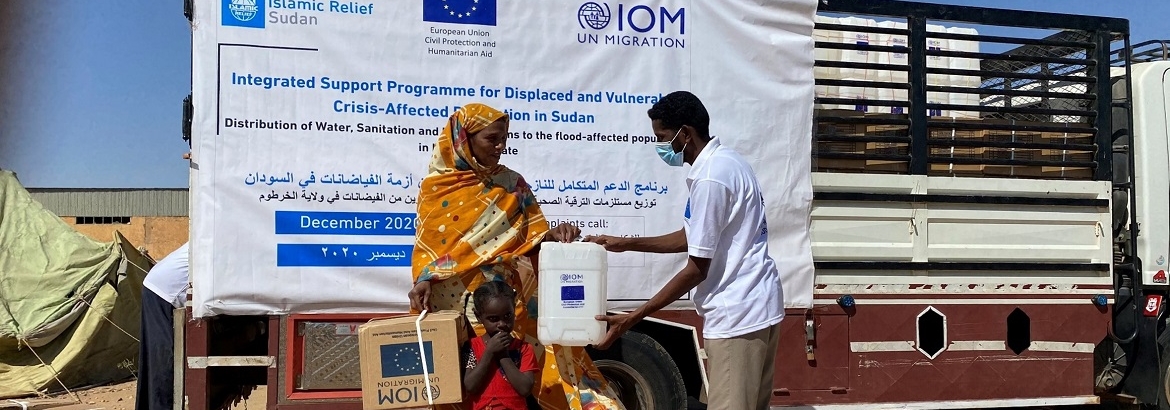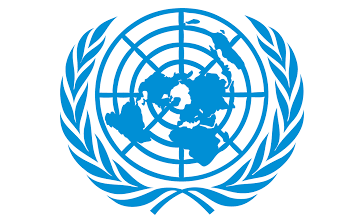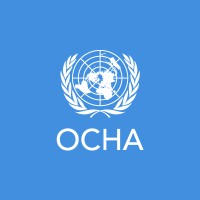IOM Vision
IOM Sudan plans to adopt an integrated approach to Sudan’s migration and crisis response challenges and support the people of Sudan in managing mobility dimensions of crises. This includes providing integrated life-saving multisector humanitarian assistance to the most vulnerable people and providing basic services to tackle critical gaps in underserved communities with the most unmet needs to support resilience. An integrated approach in line with the humanitarian-development-peace nexus is required to ensure that current and pre-existing drivers of forced displacement and fragility are addressed, and community stabilization and durable solutions are achieved.
Objective
Saving lives and protecting people on the move
|
IOM foresees humanitarian support will be needed for the following population groups: 1. Newly displaced IDPs, refugees, and populations affected by man-made or natural disasters. 2. IDPs, refugees, and returnees in protracted displacement who continue to suffer from poor living conditions and lack of support and are facing challenging conditions such as limited access to essential services and livelihood opportunities, as well as exposure to protection risks, including gender based violence, human smuggling, and trafficking. 3. Vulnerable host communities in areas of displacement and return where services are overstretched. 4. Internal and international migrants in need of direct assistance or movement assistance including humanitarian evacuation. |
|
People Targeted: 250,000 IDPs, refugees, returnees, and crisis-affected communities. Entities Targeted: Humanitarian Aid Commission (HAC), Local Administrative Authority. Shelter and non-food items interventions will improve living conditions for vulnerable populations, targeting camps and communities with high rates of displacement or contributing to the safe return or relocation of vulnerable groups. Activities will include:
|
|
People Targeted: 650,000 IDPs, refugees, returnees, and crisis-affected communities. Entities Targeted: Ministry of Irrigation and Water, Water and Environmental Sanitation (WES). Life-saving assistance will be provided to people newly displaced by conflict and disasters using early recovery approaches to improve access to water, sanitation, and hygiene (WASH) services. Activities will include:
|
|
People Targeted: 215,500 IDPs, refugees, returnees, internal and international migrants, host communities, and crisis-affected communities. Entities Targeted: Ministry of Health (MoH). To reduce mortality, morbidity, and alleviate the suffering of crisis-affected individuals and host communities by ensuring access to and availability of life-saving health care, activities will include:
|
|
People Targeted: 55,000 IDPs, refugees, returnees, internal and international migrants, and other vulnerable crisis-affected communities. Entities Targeted: Federal and State Ministries of Social Development, National and State Councils for Child Welfare. Activities will include:
|
|
People Targeted: 8,000 internal and international migrants. Entities Targeted: International Airlines with agreements with IOM, one ground transport company, participating host governments (embassies and consulates), Government of Sudan (Ministries of Foreign Affairs, Interior, and Health), two service providers for catering and accommodation. To provide humane, dignified, and voluntary movement support to vulnerable migrants in need of urgent movement assistance, activities will include:
|

Objective
Driving solutions to displacement
|
IOM foresees community stabilization, peacebuilding, and support for durable solutions will be needed for the following population groups: 1. IDPs at considerable risk of secondary or protracted displacement, who continue to suffer from poor living conditions and lack of support. 2. IDPs, refugees, returnees, and other vulnerable internal migrants (including former fighters) facing challenging conditions for return and (re)integration due to residual insecurity, damage to properties and public infrastructure, limited access to basic services and livelihood opportunities and fractured social relations. 3. Underserved host communities in areas of displacement and return where inter-communal and intra-communal conflict persists, and services are lacking or critically overstretched. 4. Foreign residents (mostly from Ethiopia) with no clear status residing in camps in eastern Sudan. 5. Stakeholders (government counterparts, non-governmental organizations (NGOs), civil society organizations (CSOs), community based organizations (CBOs)) in need of training or material assistance to better support and provide services to communities. |
|
People Targeted: 350,000 crisis-affected people including IDPs, returnees, and underserved home and host communities. Entities Targeted: Ministry of Irrigation and Water, Water and Environmental Sanitation (WES). IOM aims to provide water, sanitation, and hygiene in transitional and post-crisis situations to support underserved and at-risk communities to respond to their needs sustainably and improve capacity and resilience to future shocks and increase community resilience to disease outbreaks and malnutrition by addressing the risks related to faecal-oral transmission and water contamination through improved and sustained access to water, sanitation, and hygiene services. Activities will include:
|
|
People Targeted: 150,000 IDPs, refugees, returnees and home and host communities with special focus on underrepresented groups such as women and youth. Entities Targeted: 10 non-governmental organizations (NGOs) civil society organizations (CSOs) and community-based organizations (CBOs). Community stabilization programming aims to prevent, mitigate, and reduce the drivers and negative effects of forced displacement and irregular migration related to natural and/or man-made crises. This includes the provision of essential services, the promotion of social cohesion and community management of natural resources, capacity building and supporting inclusive economic recovery through livelihood opportunities. To (re)establish stability and security, address drivers of further forced displacement or migration, restore trust amongst community members, vulnerable populations and local authorities, Activities will include:
|
|
People Targeted: 200,000 IDPs, returnees, refugees, and home and host community members. Entities Targeted: 5 NGOs, CSOs, CBOs. Progression towards durable solutions will be guided by IOM’s Progressive Resolution of Displacement Situations Framework (PRDS), which is in line with the Inter-Agency Steering Committee (IASC) Framework on Durable Solutions for IDPs, to gradually resolve protracted displacement in complex crisis situations. IOM Sudan aims to support IDPs to return voluntarily, in safety, and with dignity to their homes or places of habitual residence, or to resettle voluntarily in another part of the country. IOM will work closely with partners and local authorities to contribute towards rapid recovery, self-reliance, and promoting local integration and (re)integration in safer and more secure living conditions with better access to resources and opportunities by:
|
|
People Targeted: 100,000 individuals in conflict affected communities and people from pastoralist or sedentary communities along migratory routes; home and host communities with inter and intra communal disputes; and former combatants/fighters. Entities Targeted: Sudan Disarmament, Demobilization and Reintegration Commission (SDDRC), 7 CSOs and CBOs, relevant line ministries and institutions. IOM will contribute towards reducing risks of conflict by promoting social cohesion and by working directly with selected communities to identify root causes of tension and conflict, conducting conflict analyses, strengthening local conflict resolution mechanisms, improving human security including addressing the need for immediate security and longer-term recovery and delivering appropriate peace dividends. Activities will include:
|
Objective
Strengthen preparedness and reduce disaster risk
|
IOM foresees that emergency preparedness and support to reduce disaster risks will be needed for the following population groups: 1. IDPs, refugees, returnees, and vulnerable internal or international migrants exposed to disaster risks that may cause secondary or protracted displacement, or impede sustainable return. 2. Local communities exposed to multi-hazard disaster risks including flood, drought, and health hazards, and where critical emergency or preventative measures are limited or not available. 3. Stakeholders (Government counterparts, NGOs, CSOs, CBOs) in need of training and material support to better assist communities exposed to disaster risks. |
|
People Targeted: 70,000 IDPs, returnees, and at-risk and vulnerable communities prone to risks associated with man-made or natural disasters. Entities Targeted: HAC, Civil Defence, Higher Council for Environment and Natural Resources (HCENR). IOM aims to develop disaster risk reduction (DRR) strategies and mechanisms to prevent or reduce displacement triggered by natural hazards, environmental degradation, or the adverse effects of climate change, and build the resilience of vulnerable communities to future and existing disaster risks. DRR approaches and interventions will also be used as entry points for wider community stabilization programming. Activities will include:
|
|
People Targeted: 50,000 IDPs, returnees, and at-risk and vulnerable communities prone to risks associated with man-made or natural disasters. Entities Targeted: 5 Government counterparts and local communities. IOM will develop capacities of government and non-governmental partners to improve humanitarian response and provide services that are scalable and support community emergency preparedness and resilience. Activities will include:
|
|
People Targeted: 60 government officials and international migrant community leaders. Entities Targeted: Ministry of Health, Ministry of Interior, Officials at Points of Entry (PoEs). IOM supports governments at points of entry (PoEs) – airports, ports, and ground crossings – in line with the obligations and recommendations outlined in the International Health Regulations (2005). IOM in Sudan is co-lead for Pillar four (PoEs) of the UN COVID-19 Preparedness Response Plan with the World Health Organization. As such, IOM will be providing services including:
|
Objective
Contribute to an evidence-based and efficient crisis response system
|
IOM foresees supporting the following stakeholders/population groups by contributing to an evidence-based and efficient crisis response: 1. Government counterparts, UN agencies, NGOs in need of humanitarian support services to assist crisis-affected people and communities. |
|
People Targeted: Indirectly reaching over 3,086,553 IDPs, 942,299 permanent returnees from internal displacement, 38,485 seasonal returnees, 92,644 returnees from abroad and 388,634 foreign nationals that will receive support based on the information provided on their needs, vulnerabilities, and gaps in services. Entities Targeted: Directly reaching at least 20 partners and 496 active subscribers from Displacement Tracking Matrix (DTM) information product mailing list comprised of government counterparts, UN agencies, INGOs/NGOs, for more credible, comprehensive, and evidence-based situational analysis. IOM will use DTM to regularly capture, process, and provide humanitarian actors with multi-layered information products, including sex and age disaggregated data, and the locations, composition, vulnerabilities and needs of displaced and mobile populations in order to deliver more targeted humanitarian assistance and response, as well as produce an evidence base for programme design, strategy, and operational planning across the country. The following methodologies will be used in Sudan in 2022 to provide this critical information management service:
|
|
People Targeted: Indirectly reaching over 500,000 IDPs and other affected populations that will receive services based on support provided to targeted International Non-governmental Organizations (INGOs) and National Non-governmental Organizations (NNGOs). Entities Targeted: Directly reaching at least 15 INGOs/NNGOs. To build the capacity of partners to provide life-saving humanitarian assistance, IOM will support IN/NNGOs by:
|
Sudan
The map used here is for illustration purposes only. Names and boundaries do not imply official endorsement or acceptance by IOM.
Figures are as of 31 December 2023. For more details of IOM's operational capacity in country, please see the IOM Capacity section.























